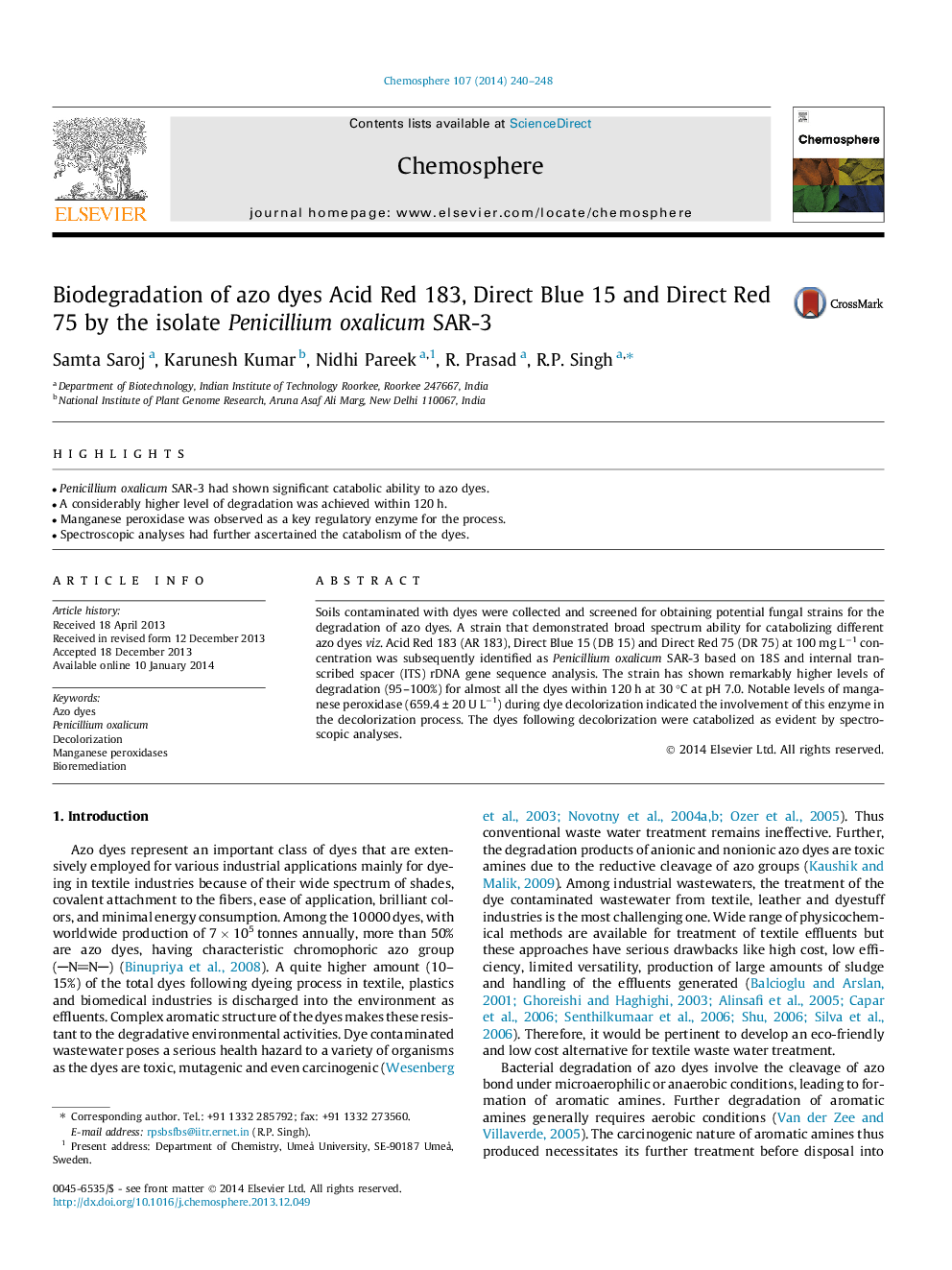| Article ID | Journal | Published Year | Pages | File Type |
|---|---|---|---|---|
| 6309143 | Chemosphere | 2014 | 9 Pages |
â¢Penicillium oxalicum SAR-3 had shown significant catabolic ability to azo dyes.â¢A considerably higher level of degradation was achieved within 120 h.â¢Manganese peroxidase was observed as a key regulatory enzyme for the process.â¢Spectroscopic analyses had further ascertained the catabolism of the dyes.
Soils contaminated with dyes were collected and screened for obtaining potential fungal strains for the degradation of azo dyes. A strain that demonstrated broad spectrum ability for catabolizing different azo dyes viz. Acid Red 183 (AR 183), Direct Blue 15 (DB 15) and Direct Red 75 (DR 75) at 100 mg Lâ1 concentration was subsequently identified as Penicillium oxalicum SAR-3 based on 18S and internal transcribed spacer (ITS) rDNA gene sequence analysis. The strain has shown remarkably higher levels of degradation (95-100%) for almost all the dyes within 120 h at 30 °C at pH 7.0. Notable levels of manganese peroxidase (659.4 ± 20 U Lâ1) during dye decolorization indicated the involvement of this enzyme in the decolorization process. The dyes following decolorization were catabolized as evident by spectroscopic analyses.
